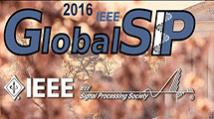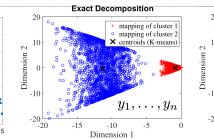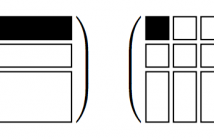
A flagship conference of the IEEE Signal Processing Society, GlobalSIP is structured around coherent symposia that explore new and emerging developments in the field, while maintaining a format that encourages accessibility to interested researchers and fosters interaction and cross-pollination of ideas.

- Read more about Sparse Linear Regression via Generalized Orthogonal Least-Squares
- Log in to post comments
- Categories:
 3 Views
3 Views
- Categories:
 4 Views
4 Views
- Read more about In-Network Linear Regression with Arbitrarily Split Data Matrices
- Log in to post comments
We address for the first time the question of how networked agents can collaboratively fit a Morozov-regularized linear model when each agent knows a summand of the regression data. This question generalizes previously studied data-splitting scenarios, which require that the data be partitioned among the agents. To answer the question, we introduce a class of network-structured problems, which contains the regularization problem, and by using the Douglas-Rachford splitting algorithm, we develop a distributed algorithm to solve these problems.
Poster.pdf
- Categories:
 4 Views
4 Views
- Read more about MULTIVARIATE EMPIRICAL MODE DECOMPOSITION BASED SIGNAL ANALYSIS AND EFFICIENT-STORAGE IN SMART GRID
- Log in to post comments
Wide-area-measurement systems (WAMSs) are used in smart grid systems to enable the efficient monitoring of grid dynamics. However, the overwhelming amount of data and the severe contamination from noise often impede the effective and efficient data analysis and storage of WAMS generated measurements. To solve this problem, we propose a novel framework that takes advantage of Multivariate Empirical Mode Decomposition (MEMD), a fully data-driven approach to analyzing non-stationary signals, dubbed MEMD based Signal Analysis (MSA).
- Categories:
 7 Views
7 Views
- Read more about COMPLEX INPUT CONVOLUTIONAL NEURAL NETWORKS FOR WIDE ANGLE SAR ATR
- Log in to post comments
To date, automatic target recognition (ATR) techniques in synthetic aperture radar (SAR) imagery have largely focused on features that use only the magnitude part of SAR’s complex valued magnitude-plus-phase history. While such techniques are often very successful, they inherently ignore the significant amount of discriminatory information available in the phase. This paper describes a method for exploiting the complex information for ATR by using a convolutional neural network (CNN) that accepts fully complex input features.
- Categories:
 10 Views
10 Views
- Read more about CONSENSUS AND MULTIPLEX APPROACH FOR COMMUNITY DETECTION IN ATTRIBUTED NETWORKS
- Log in to post comments
An attributed network has nodes with attribute vectors. For community detection on an attributed network, we exploit the attributes to disentangle the potentially mixed topological structures. We describe a multiplex representation scheme for overlapping community detection in attributed networks and find consensus communities across layers of different connection structures. We test the method on Twitter, Facebook and Google+ networks and the results are comparable to state of the art. We show that the use of attribute vectors improves detection accuracy.
poster.pdf
- Categories:
 10 Views
10 Views
- Read more about Beam Tracking for Mobile Millimeter Wave Communication Systems
- Log in to post comments
Millimeter wave (mmWave) is an attractive option for high data rate applications. Enabling mmWave communications requires appropriate beamforming, which is conventionally realized by a lengthy beam training process. Such beam training will be a challenge for applying mmWave to mobile environments. As a solution, a beam tracking method requiring to train only one beam pair to track a path in the analog beamforming architecture is developed. Considering its low complexity which is suitable for mobile settings, the extended Kalman filter is chosen as the tracking filter.
- Categories:
 262 Views
262 Views
- Read more about Emplying Vector Quantization on Detected Facial Parts for Face Recognition
- Log in to post comments
Facial Parts Detection (FPD) approach in conjunction with Vector Quantization (VQ) algorithm are proposed for face recognition. Detecting facial parts, which are nose, both eyes, and mouth, and choosing appropriate dimensions for each part, are done in the preprocessing phase. In the feature extraction phase, four groups for each person, one group for each detected part, are constructed for dimensionality reduction and feature discrimination by considering all parts of all training poses. For further data compression, VQ algorithm is applied to each of the four groups.
- Categories:
 4 Views
4 Views
- Read more about Distributed Cooperative Charging for Plug-in Electric Vehicles: A Consensus+Innovations Approach
- Log in to post comments
- Categories:
 7 Views
7 Views